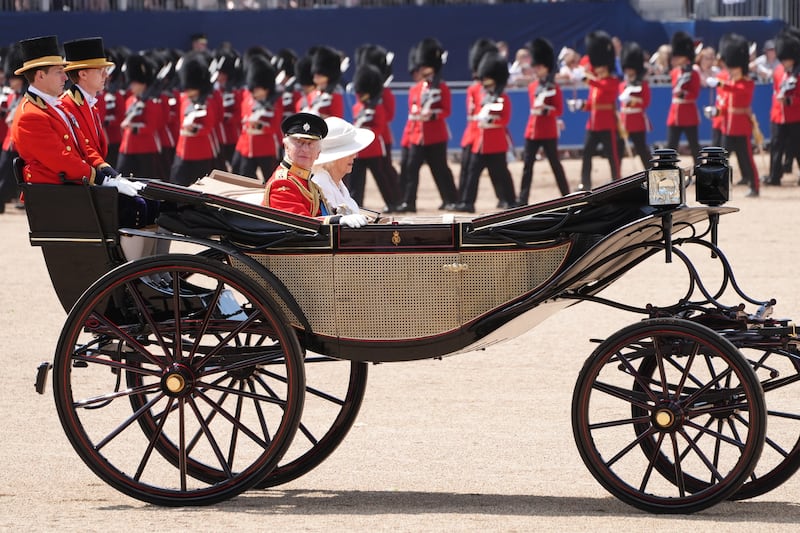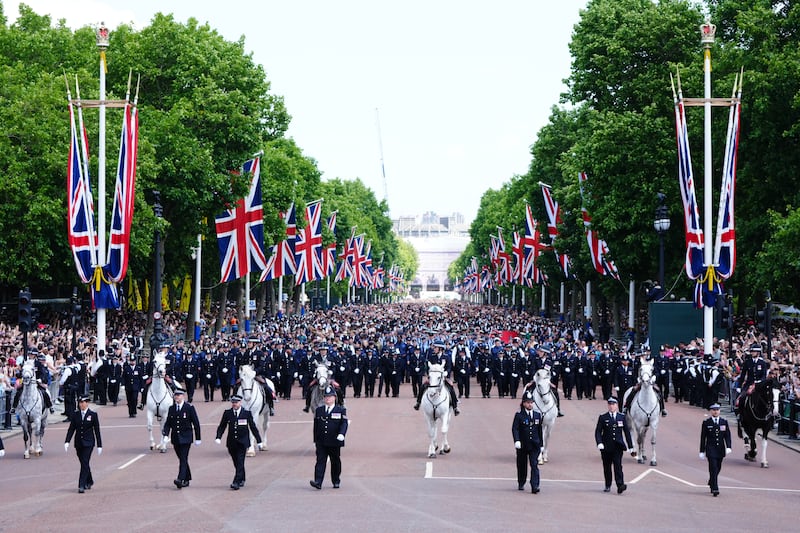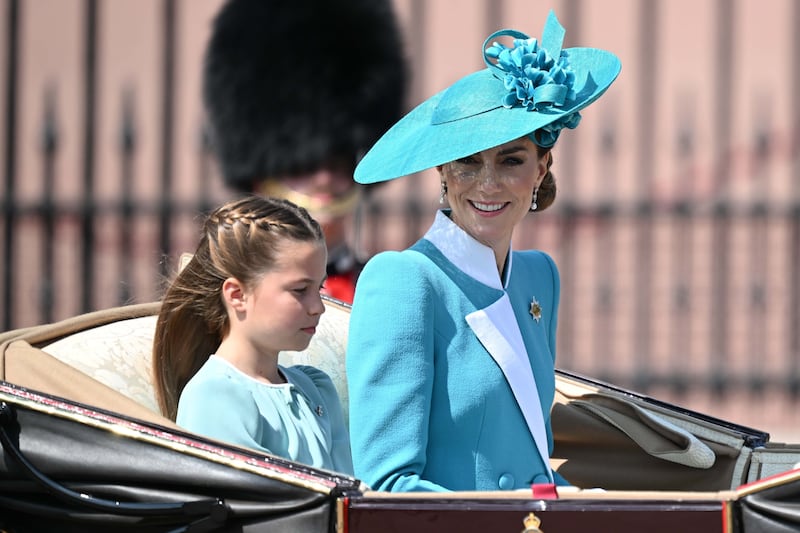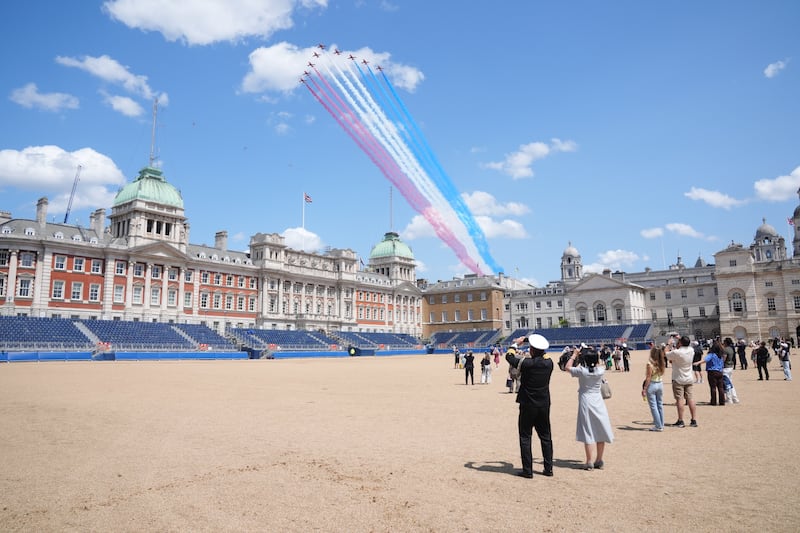King Charles III presided over Trooping the Colour, the annual celebration of the monarch’s birthday in London.
Just a handful of royals were on view for the ceremony Saturday, with Prince Harry, Meghan Markle, and his children the most notable absentees amid their bitter feud with the royal family.
Charles’ failure to bring his son back into the fold is always highlighted on occasions such as these, and today’s pomp and ceremony was no different.
It was a stark contrast to days of yore, when vast numbers of the extended Windsor clan gathered on the Buckingham Palace balcony in London.
This striking visual tableau, with the colorful bauble of Queen Elizabeth at its center, was, for many decades, the iconic image of the royal family.

Over the years, the images, shot at annual intervals, coalesced, for many royal fans, into a nostalgia-tinged, mental time-lapse gif; royal children turned into teenagers and young men, dashing princes became middle-aged dads then wild eyed pensioners, and elderly, irascible, uncles, and aunts disappeared to their eternal reward.
The series of images ringed the changes and told a compelling story of an eccentric, privileged clan—highly dysfunctional, to be sure (just look at the misery etched on Princess Diana’s face in the ’80s), but one that somehow muddled through and put it all aside, once a year, in the name of family unity.
Then Charles got involved.

In the years running up to the Golden Jubilee, in 2012, the late Queen Elizabeth II began the process of transition, handing over significant responsibilities to Charles.
This is established practice in most well managed monarchies; a similar thing is going on now between Charles and Prince William (witness, for example, William at the papal funeral), a custom lent new urgency by the king’s cancer diagnosis, which saw him ride in a carriage today rather than being on horseback.
One of Charles’ first steps when his mother gave him more control was to start the process of implementing his long cherished plans of “slimming down” the monarchy by reducing the number of individuals who got either a paycheck, a place to live, or a moment in the sun on the balcony with the queen.

At the time, it was widely thought Charles’ main goal was to exclude Prince Andrew and his family from cashing in on their royal status. Andrew and Charles disliked each other as children and young men, and Charles mistrusted, with good reason, as the Jeffrey Epstein affair would subsequently prove, his brothers’ taste in friends.
Charles also wanted to cut loose Andrew’s daughters, Princesses Beatrice and Eugenie. They are much more deeply enmeshed in their father’s complex business operations than most casual followers of the royal story realize. They were told their destiny was not to be working royals; they were stripped of their security details, pink-slipped from the royal payroll, and advised to get jobs.

But then, of course, disaster struck, and Harry and Meghan Markle left the family business, leaving Charles with the increasingly geriatric rump of the royal family not so much slimmed down as anorexic. There are now just seven working royals: Charles; Queen Camilla; Prince William; Princess Kate; the duke and duchess of Edinburgh, Edward and Sophie; and Princess Anne.
The perilously thin staffing arrangements were made worse by Charles and Princess Kate’s cancer diagnoses, which put multiple family members out of action for several months last year and has led Kate and William to dramatically scale back their public engagements.

To be fair to William and Kate, they pulled out all the stops Saturday, bringing their kids out onto the balcony for the traditional flypast; the monarchy’s next generation is secure. And glorious sunshine helped, as the Royal Air Force aerobatic team, the Red Arrows, painted the skies above Buckingham Palace red, white, and blue—in contrast to last year, when torrential rain curtailed the celebrations.
The post Harry-Shaped Hole Haunts King Charles’ Birthday Parade appeared first on The Daily Beast.




